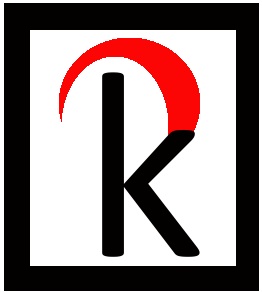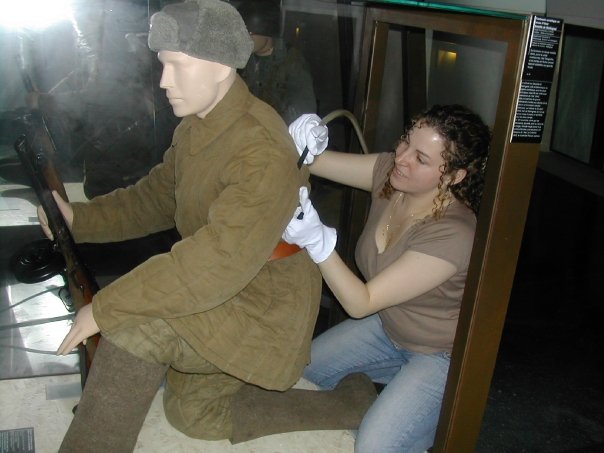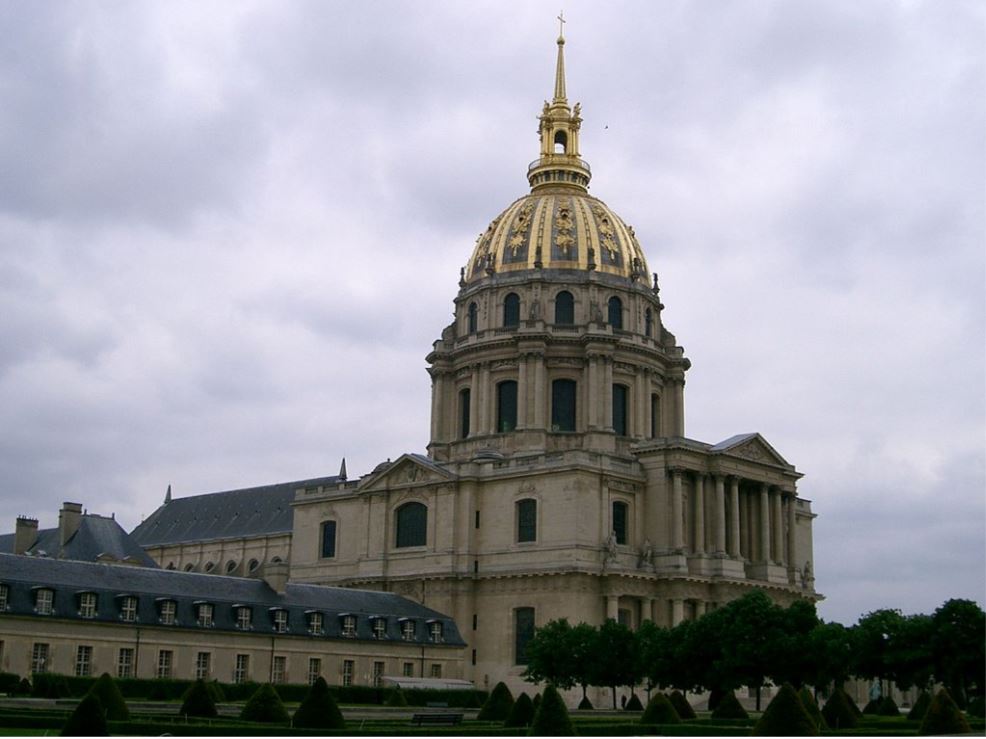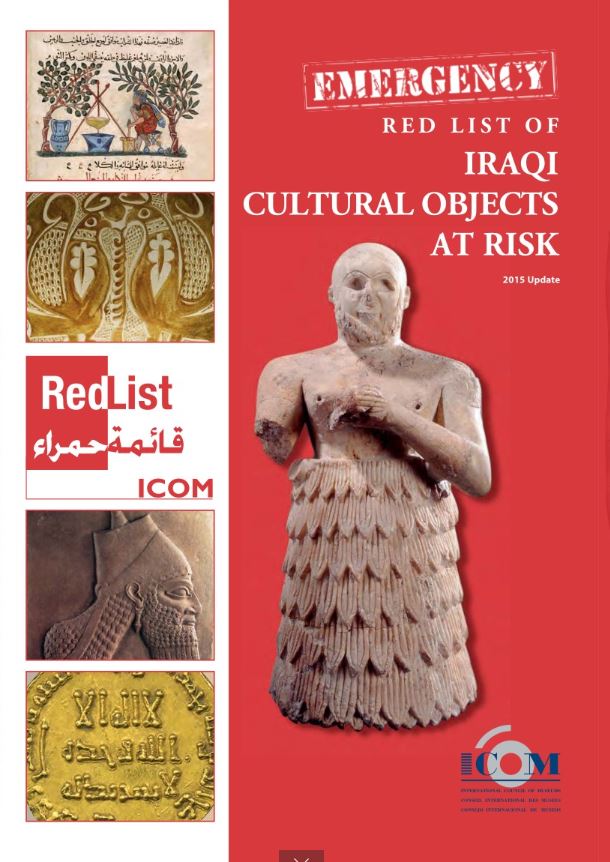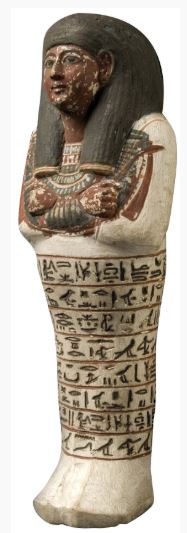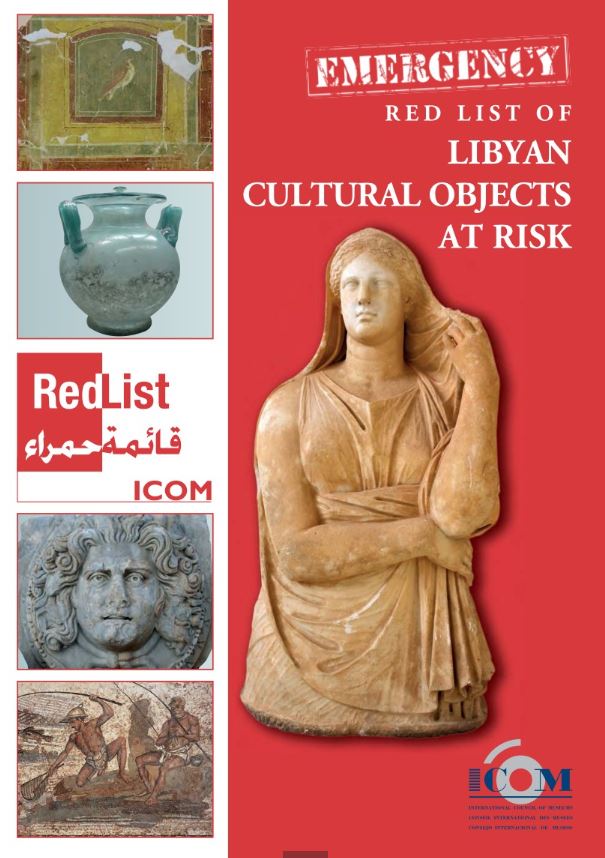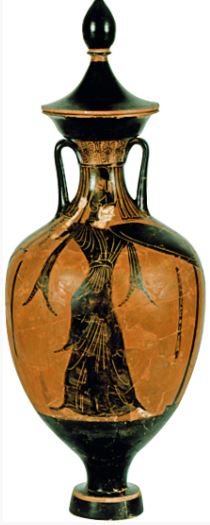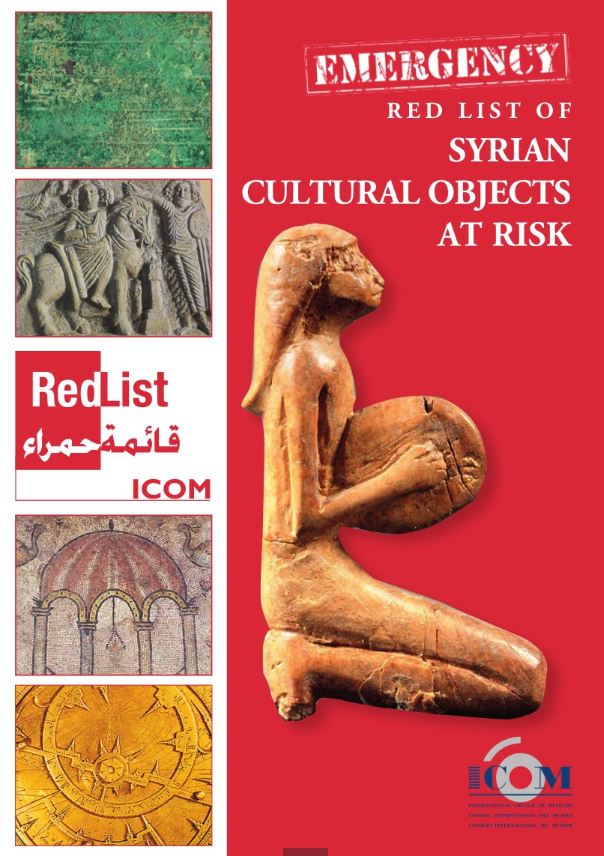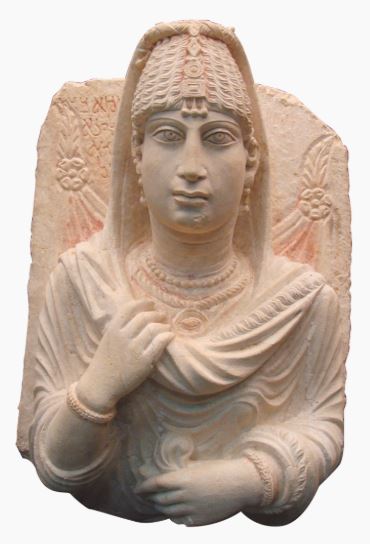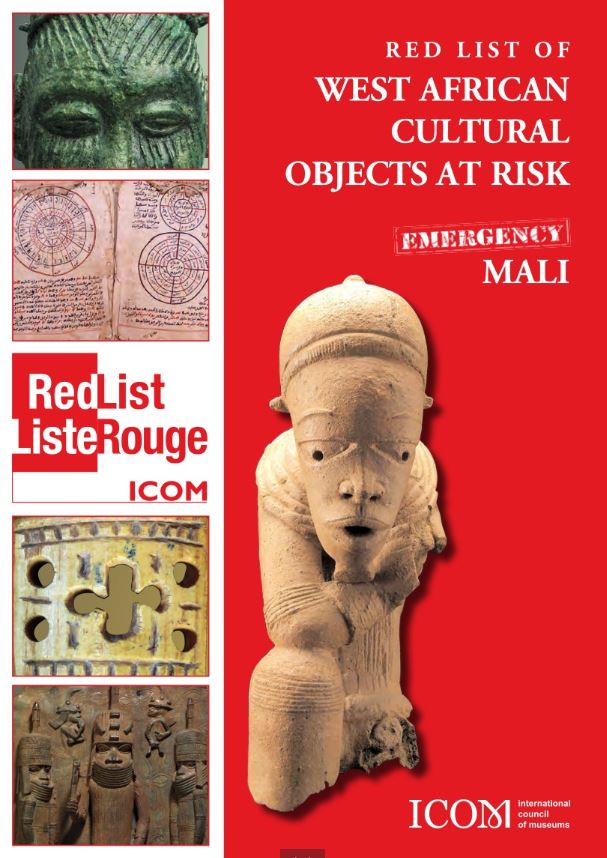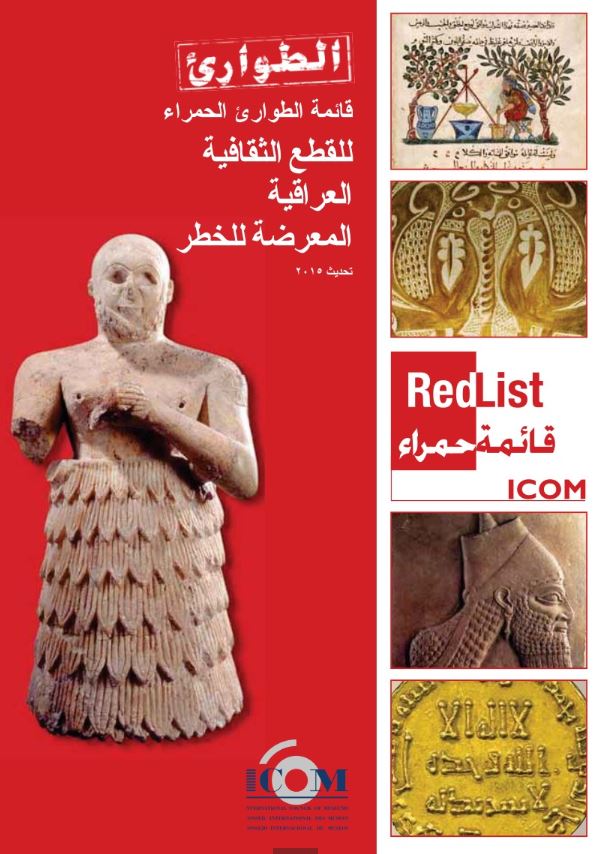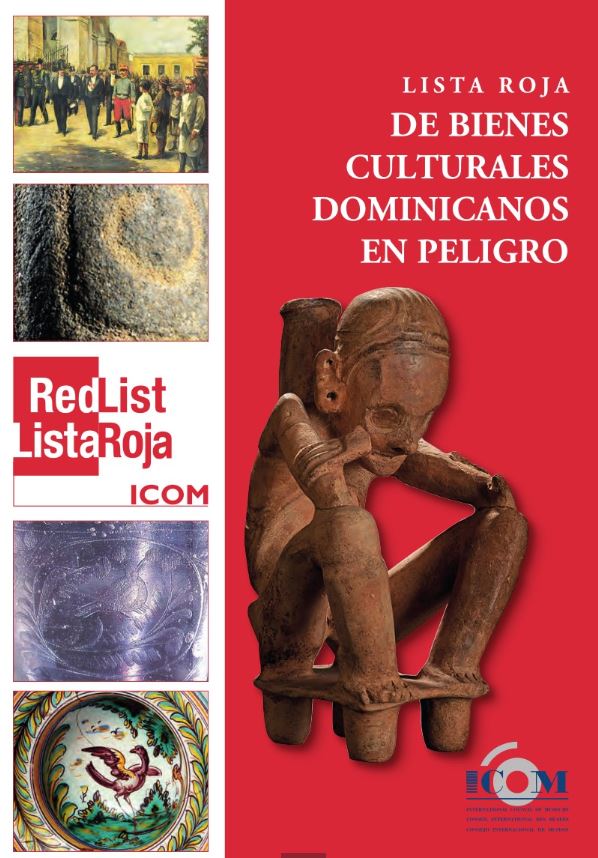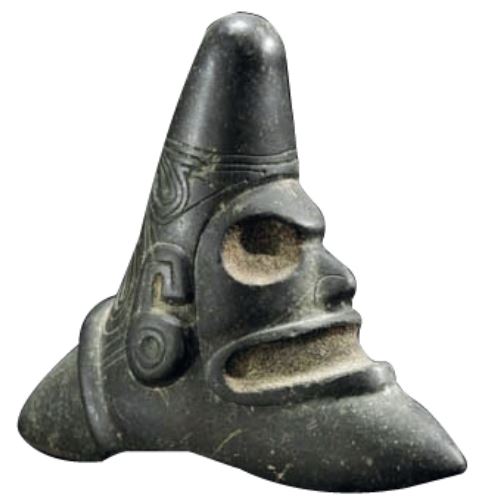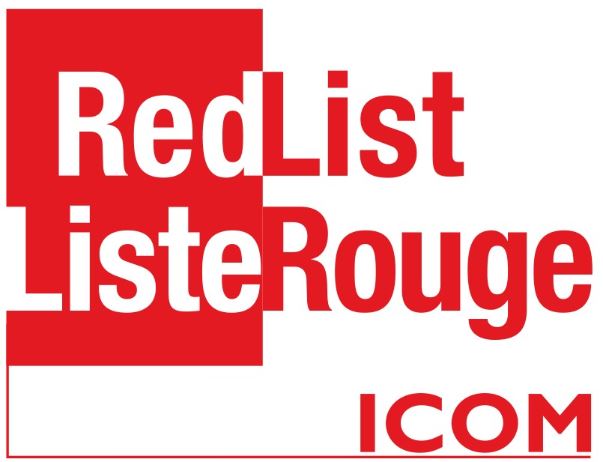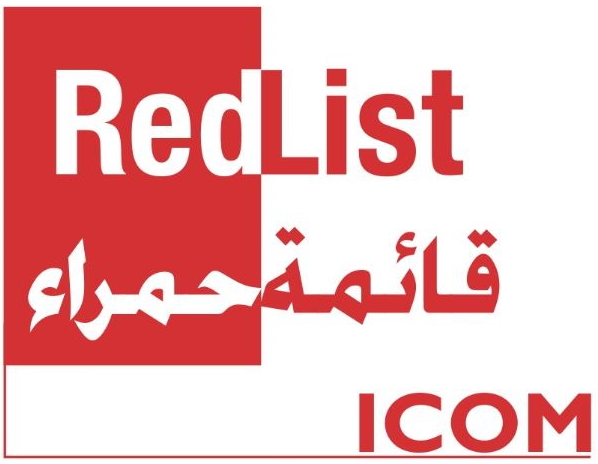Renata Kaminker – Fine Art Solutions returns as a guest lecturer to Sotheby’s Institute of Art
It was an honour to have been, once more, invited to Sotheby’s Institute of Art in London as a guest lecturer for the MA in Art Logistics.
Speaking to a room full of students on issues regarding the ethics and legalities of conservation and restoration as well as introducing them to the dynamics of restitution of cultural goods proved as enriching as always, the questions and ensuing discussions leading to new thought processes around these two important issues.
Over the course of two and half hours we covered legal and normative frameworks, case studies, the definitions of what a conservator is and the responsibilities involved in this role, the differences between restitution, repatriation, and return, and many other subjects.
As always, it was a great pleasure being involved in the MA, interacting with the students, and seeing thefuture generation of art market professionals.
Summer 2021 Teaching at Sotheby's Institute of Art's MA in Art Logistics
I am delighted to have once more been invited to talk to students at Sotheby’s Institute of Art on the important legal and ethical issues surrounding conservation.
This is the second year the MA in Art Logistics is taking place, and just like last year it was a pleasure to exchange with a new generation of future art professionals.
The students and I discussed a wide range of issues, from the legal and normative framework to international conservation ethics, to ongoing debates and conservation surprises and scandals (both historical and contemporary).
I look forward to future exchanges with them, and other student groups.
Conservation Treatments and Reports as an Integral Part of Provenance Research
I’m honoured to have been invited to contribute to Flynn & Giovanni's The Provenance Research Blog.
Conservation treatments and their reports, which include condition reports, are an important yet underused asset in provenance research. As written and photographic witnesses to the state of an artwork at a specific point in time, including details on any damages, changes, place(s) of conservation, and history of the piece, these reports are an essential part of research.
You can read the full article here.
Providing better value to collectors: Technical analysis and collections management combined
The partnership between Art in Lab and Renata Kaminker – Fine Art Solutions, has allowed a collection’s owner to find the response to its scientific and collections management needs in one single place, thus saving valuable time and resources
Estelle Itié from Art in Lab and I are hard at work studying paintings under three different but complementary techniques:
Raking light
Ultraviolet (UV) photography
Infrared (IR) Reflectography
Each one of these analytical techniques provides a new level of information which will allow us to acquire a deeper understanding of the pieces under our care and the artist that produced them, while serving as added data to the inventory files being prepared.
In its most basic form, raking light renders the differences in the surface texture of the painting more visible, UV photography will provide information on which areas have been over-painted or if there is a varnish on the surface, and IR Microscopy will reveal any underlying drawings.
When combined with the previous study of the stratigraphic layers, performed a few weeks ago with co-founder of Art in Lab Ilenia Cassan, these images will allow to not only have empirical data supporting or refuting the artworks’ dating theories, but also allow for better future conservation treatment choices.
* Our client’s privacy being one of our prime concerns, when sharing any images we do so with the owner’s written permission and ensuring that the artworks are either blurred or have only details appear.
Raking light
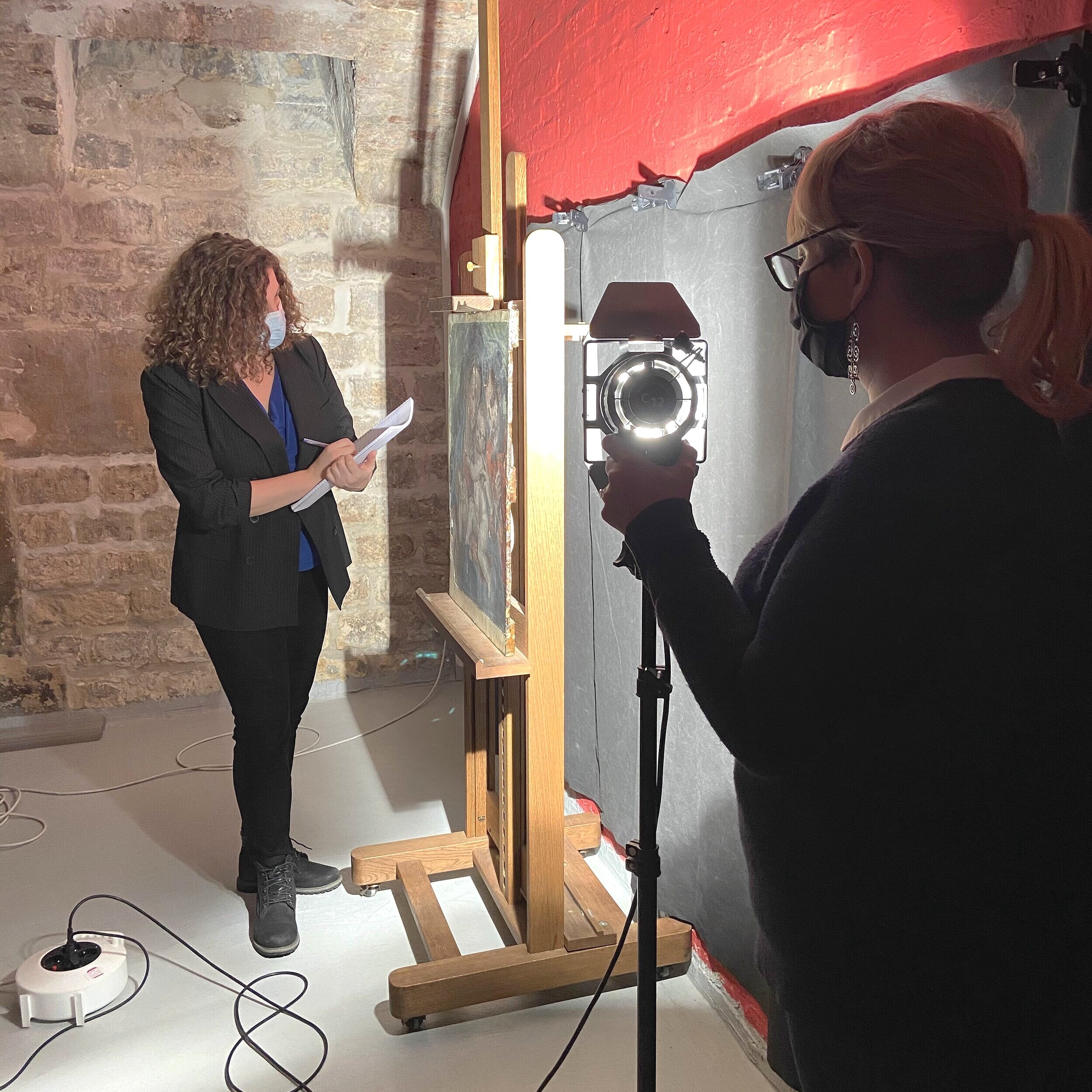
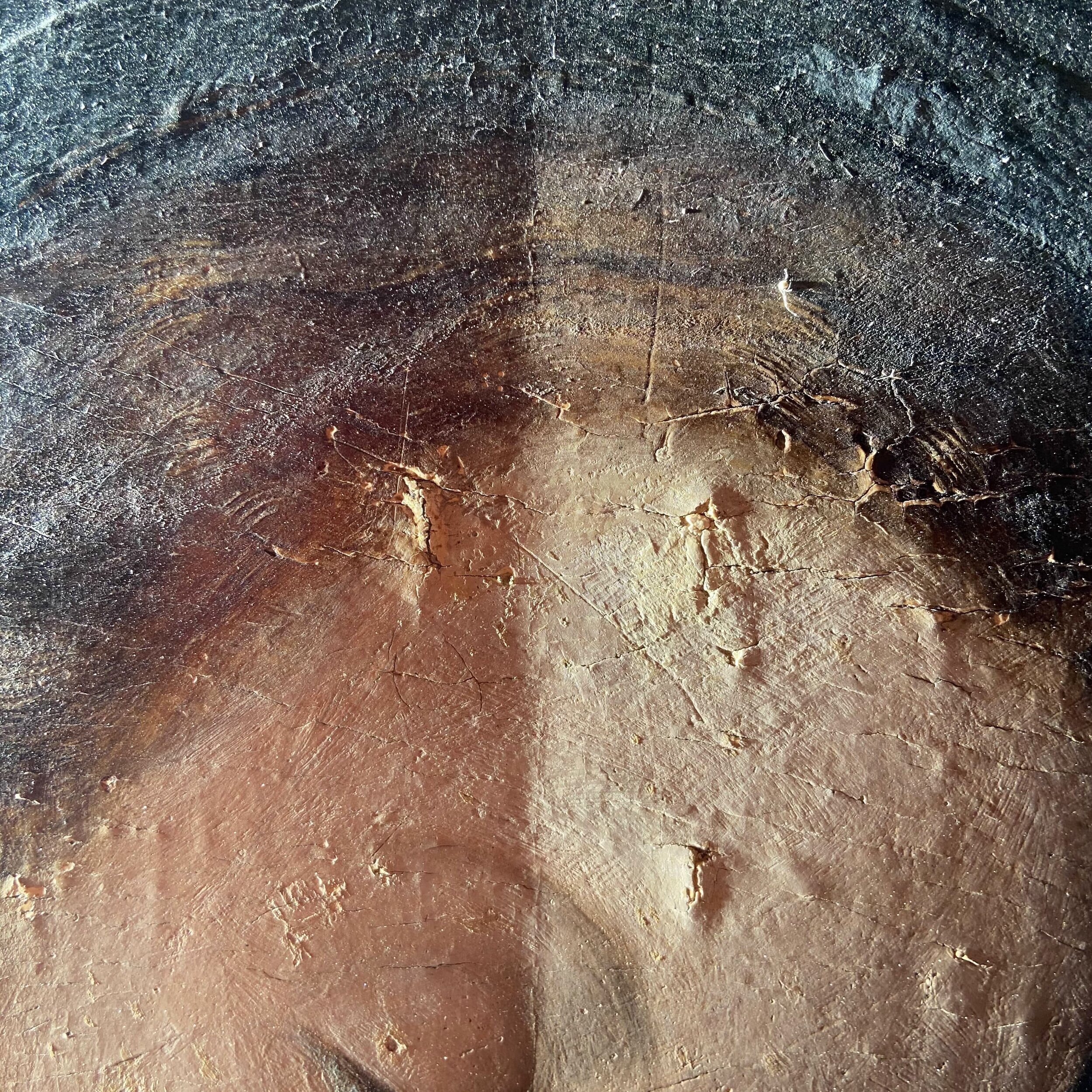

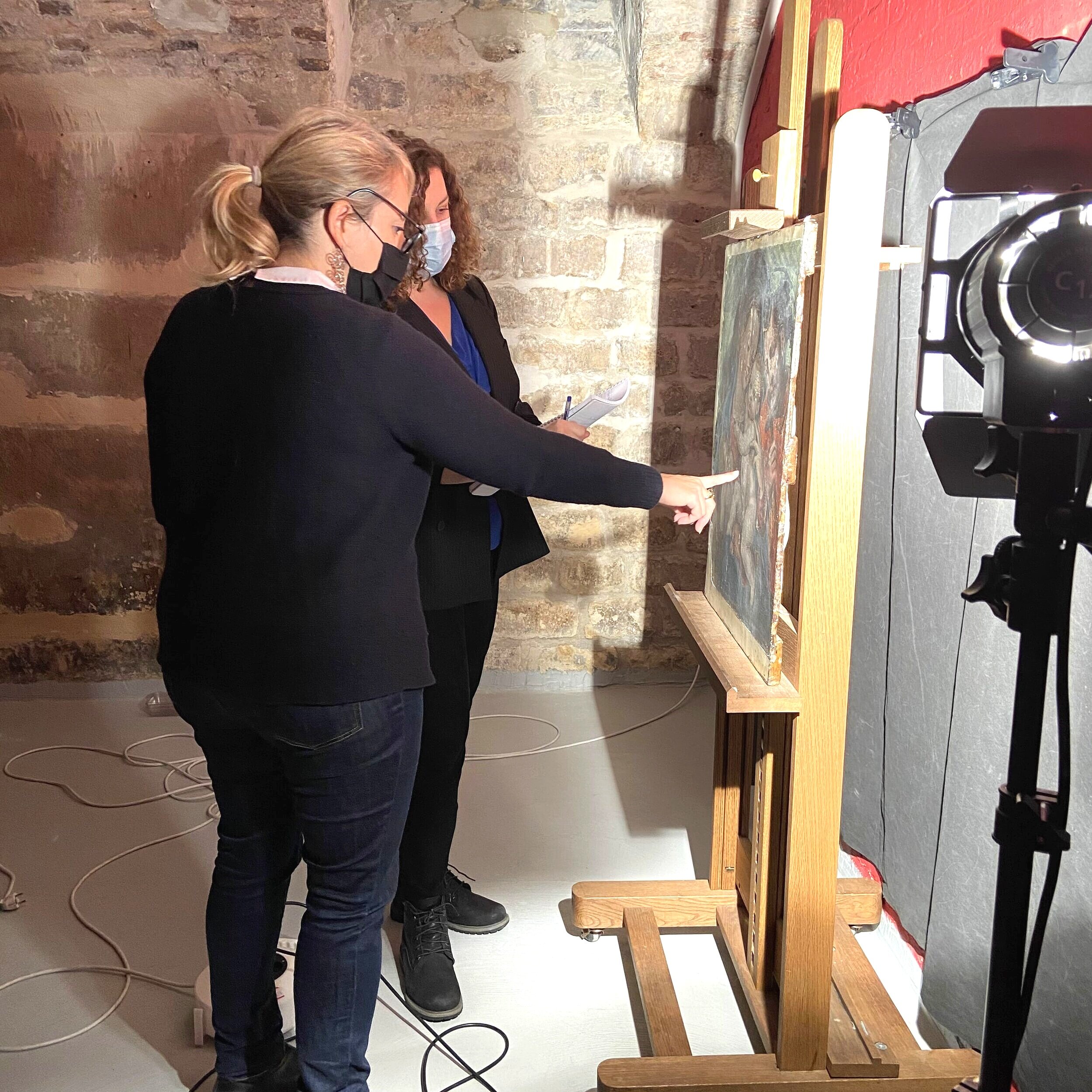
Under raking light, the painting is illuminated from only one side, at an oblique angle as related to its surface.
As stated above, raking light allows us to clearly see the surface’s texture, highlighting any differences, be it due to damage or to the artists’ doing, such as thicker brushstrokes or an impasto.
It is one of the two most common techniques used by conservators to study a piece when preparing a condition report as it reveals easily, quickly, and very clearly the surface condition of a painting.
Ultraviolet (UV) photography
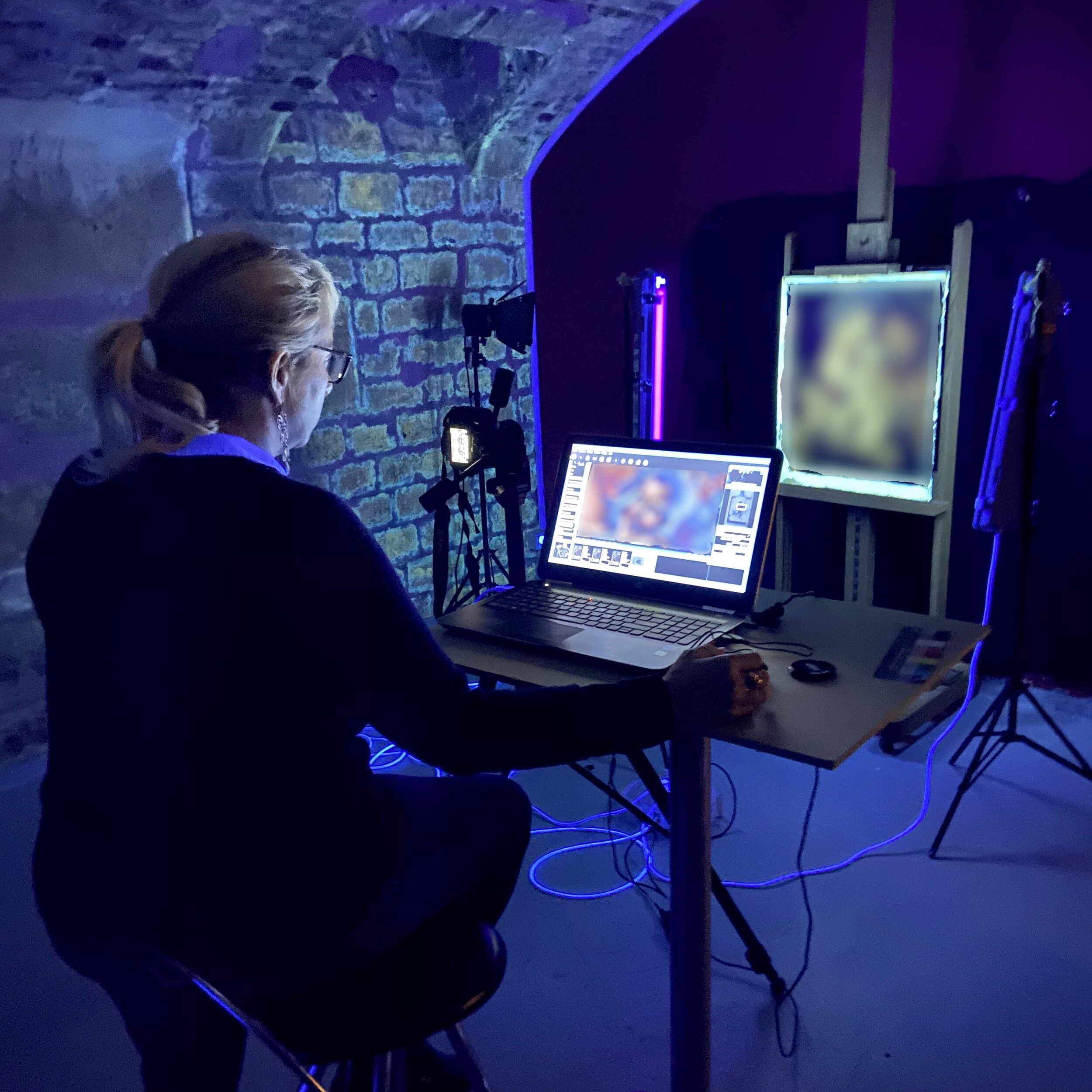
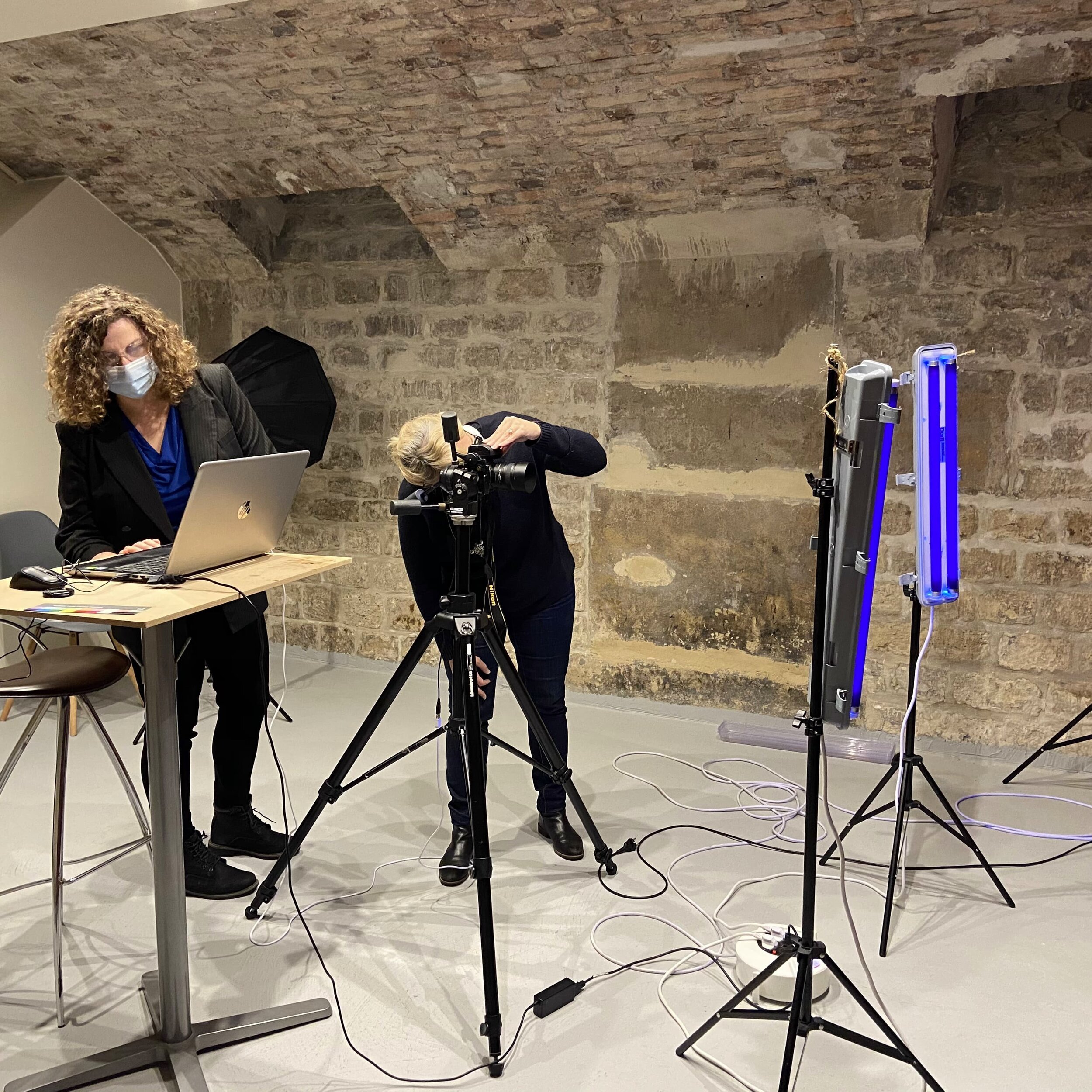
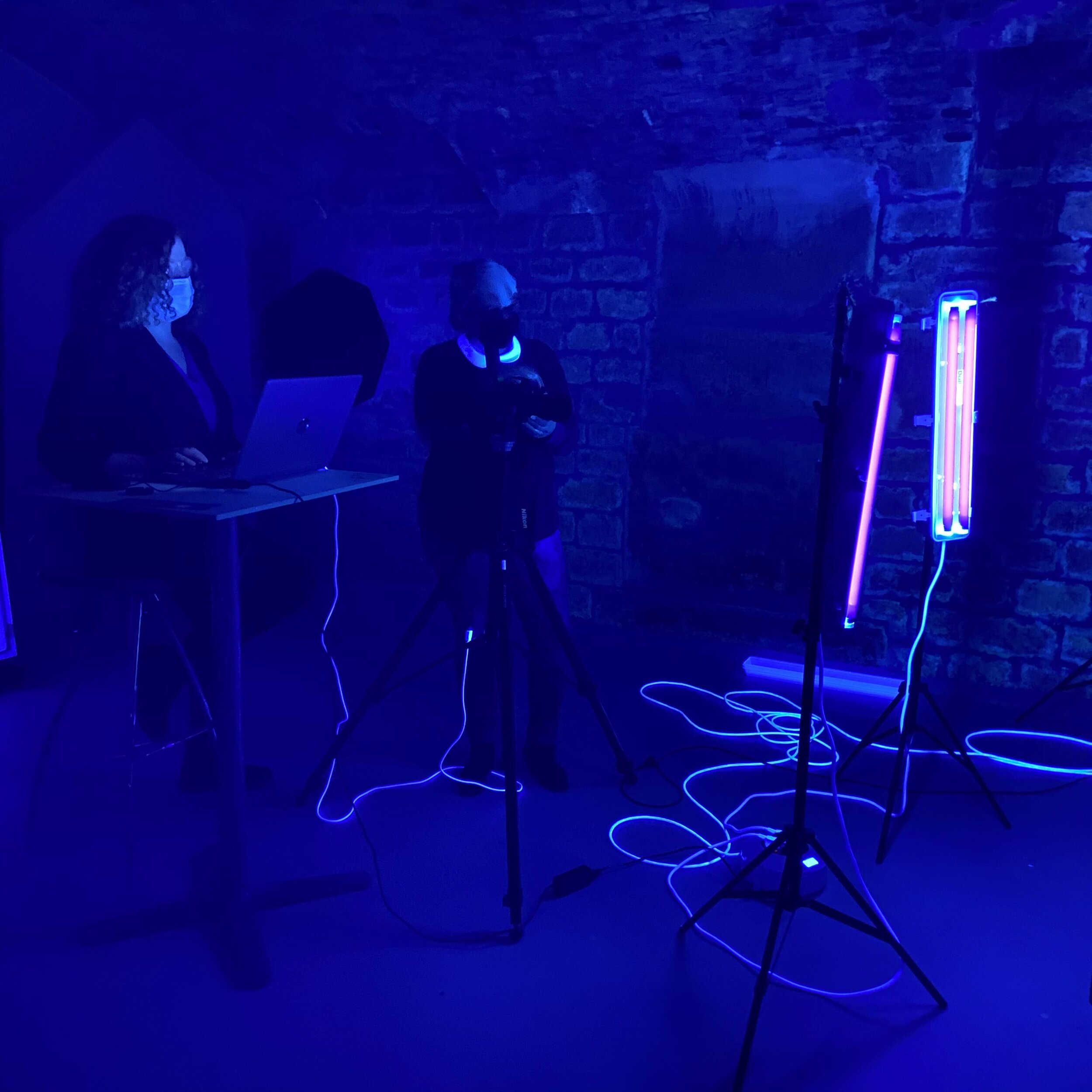
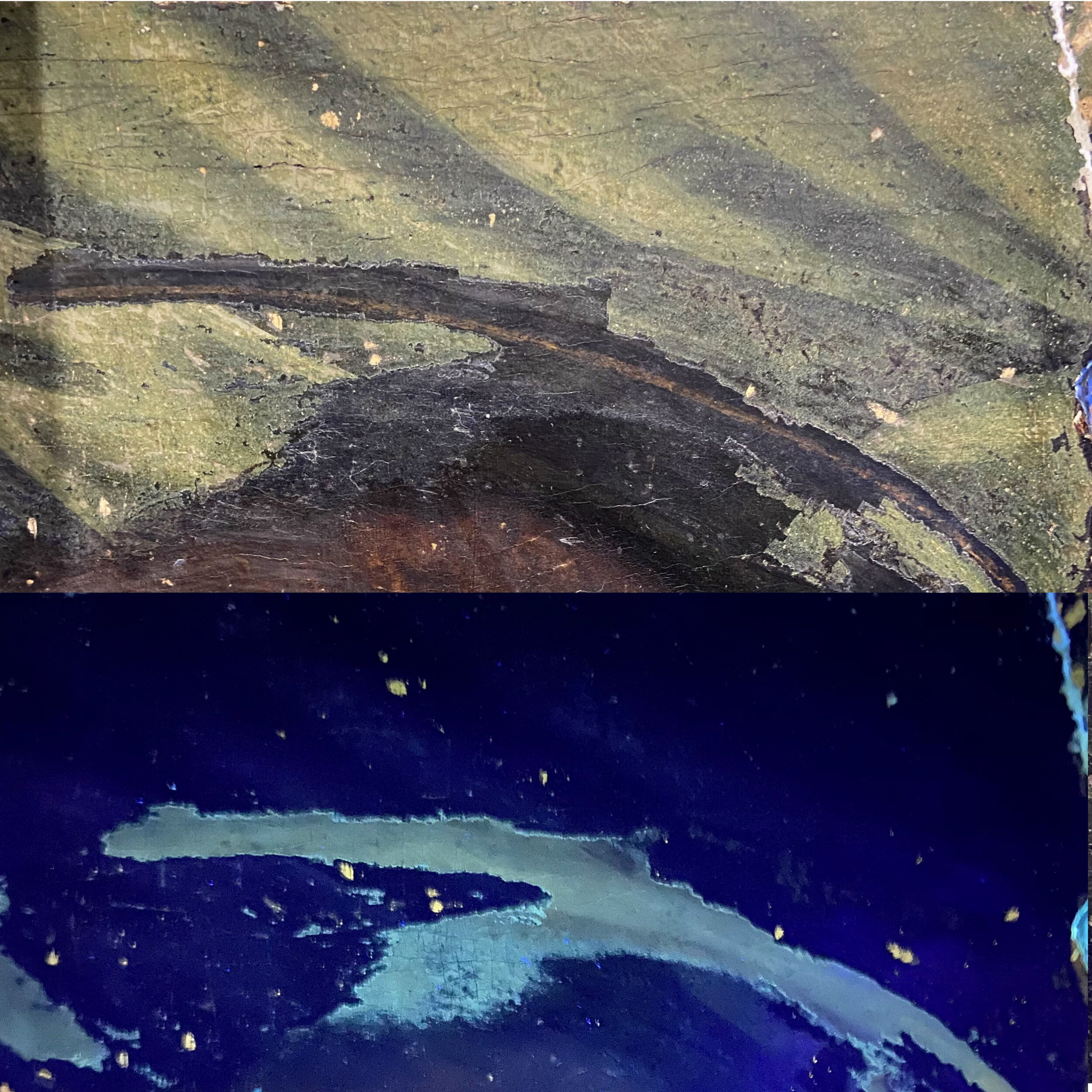
UV light is the other analytical technique most commonly used by conservators and conservation scientists alike, and is also included in condition reports.
UV light reveals:
Previous restorations, such as retouchings
Over-paintings
The presence of older natural resin varnishes
The probability of a signature or inscription’s authenticity, when compared to the surface surrounding it
The state of an artwork’s varnish
We have chosen to take things taken a step further and, in agreement with our client, have added these images to the collection’s inventory files for use in future treatment choices as well as comparison should there be any issues with the preventive conservation and storage measures that they decided on.
Infra-Red (IR) Reflectography
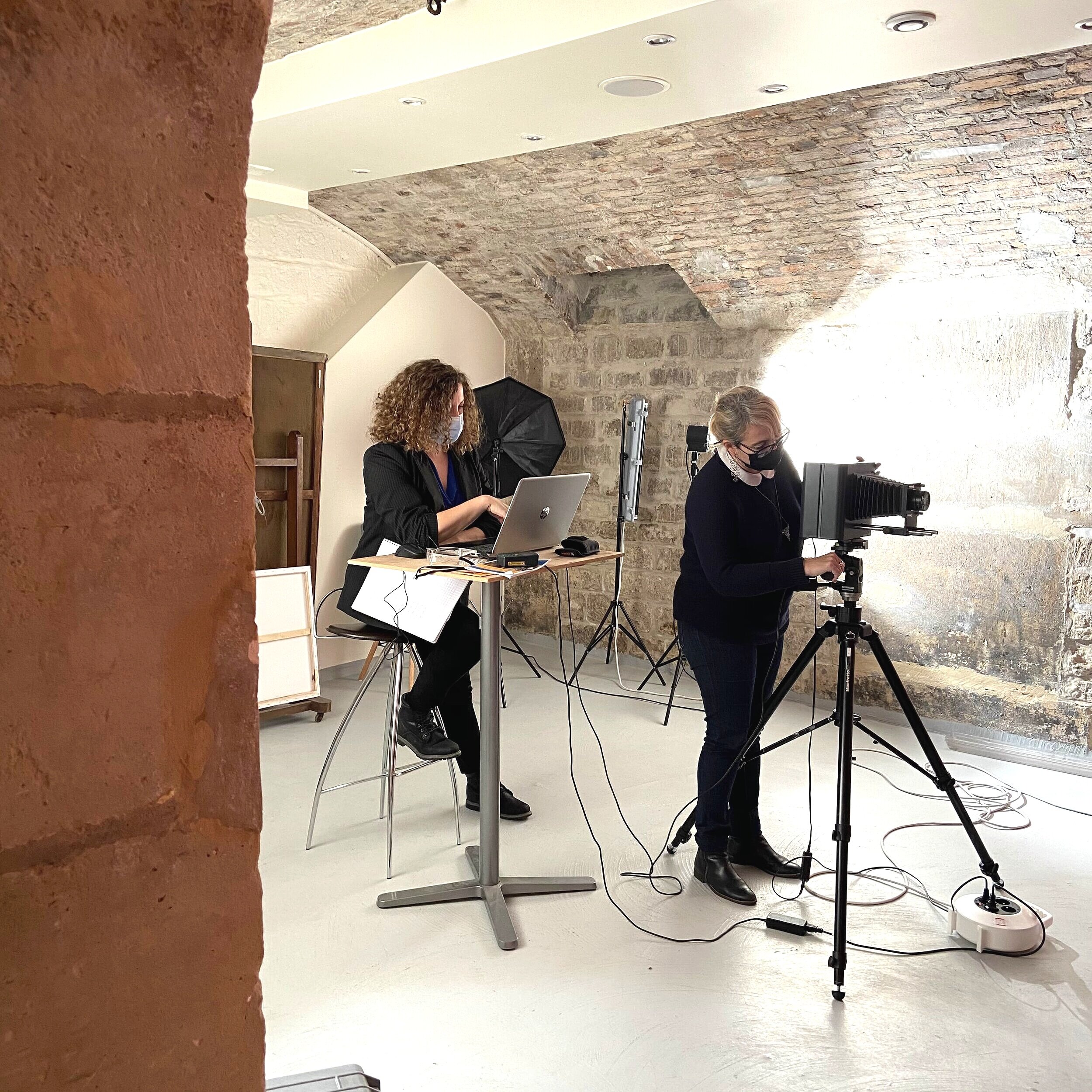
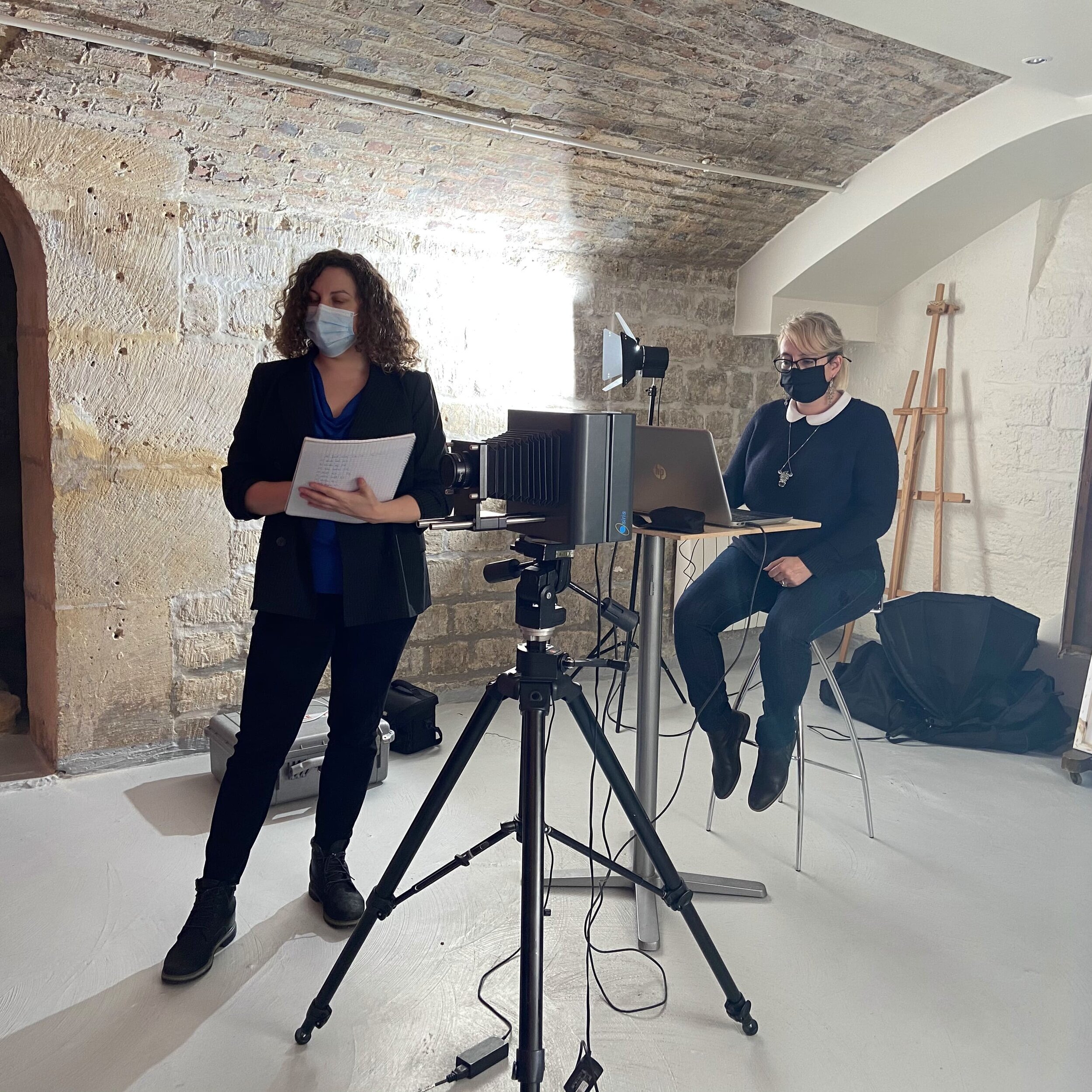
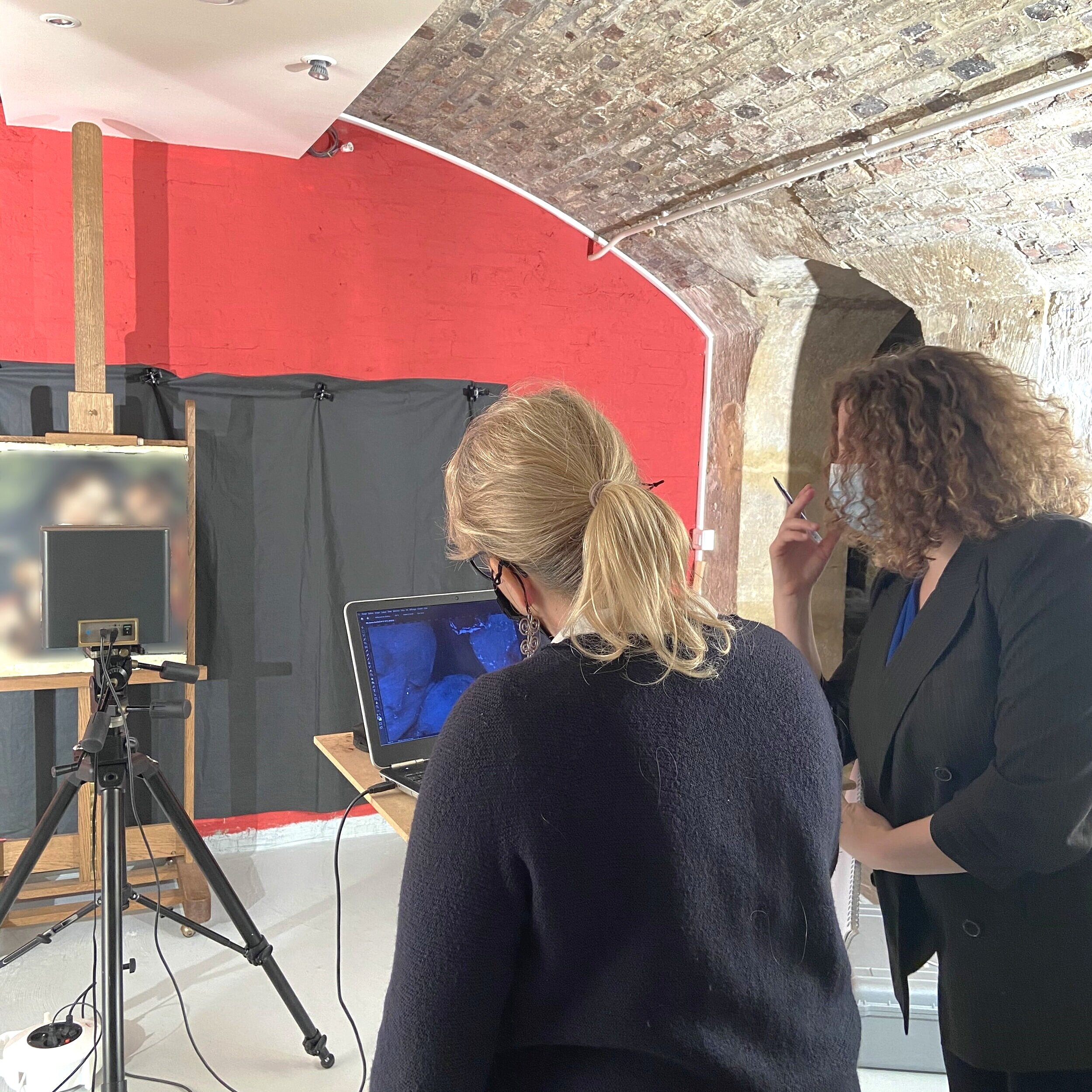
IR Reflectography is used to “see through” paint layers. This imaging technique allows us to study any existing underdrawings or compositional changes that lie beneath the visible paint layers.
IR Reflectography allows researchers to further understand the working process of an artist, which in turn will inform conservators on how to proceed. It is also used to help reveal fakes and forgeries, as these rarely have the type of underdrawings an original painting has, with all its mistakes and changes decided by the artist.
It’s been wonderful working on this collection with Art in Lab, and I look forward to future projects together. Throughout several weeks we have analysed paintings from different time periods and in different mediums, have created inventory files for all the pieces, and added condition reports to each one of these.
Thanks to the partnership between our two services the owner of these pieces has a full response to the questions of what he has, what state it is in, and what can be done to preserve it all moving forward, all in one place and without having to risk transporting the pieces or spending time going to see different specialists each in their own location.
Work in progress
Thanks to the ongoing partnership with Art In Lab we are able to work on collections from a holistic point of view.
As we move forward through the different project stages, our combined knowledge and expertise allow for better understanding of the works in front of us. Which in turn will provide a more complete report to our client.
The samples are studied under microscope in order to comprehend the stratigraphic structure of the paint layers, they were taken from a 19th century French oil on canvas. As we take a deeper look at the layers that make up the piece, we can see how the creative logic used by the artist. The build-up of layers tells the story of how the artist conceived the painting should be, how he built his image up from a simple drawing to the final work. It also helps date the piece, as we acquire more information on the pigments and other materials themselves.
Sample studying also plays a key role in confirming whether any paint or varnish was added after the artist finished the artwork, all of which, when combined with other tests such as UV, IR, and X-Ray, provides key information in understanding the object’s history.
What’s cooking?
I am delighted to announce a new partnership with an old friend: Art in Lab!
Following several exchanges and meetings, Renata Kaminker – Fine Art Solutions and Art in Lab have decided to work together on a series of requests from a private client.
We are delighted to be able to offer a complete solution to an increasing problem in private art collections: What do I have? What state is it in? Is it really as old as it purports to be? Is the author truly the one I think it is?
As we plan our approach to the incoming pieces and prepare the work that this new project requires, we look forward to answering this and any other questions that may arise along the way.
Come back to read on more news and details as we advance on this new and exciting project. We will be sharing insights into the hows and whys of our intervention choices.
Collections in lockdown: What do we do now?
Following a very busy summer working alongside the French Blue Shield Committee, I am delighted to announce that we are publishing a set of guidelines for collections care under lockdown conditions: Veille sanitaire, sûreté et sécurité en situation de confinement (Health, safety and security monitoring in lockdown situations).
The document gives a simple set of steps that may be followed when guiding your teams. It’s meant to help with monitoring situations, specifically regarding sanitary, security and safety measures.
The document is particularly aimed at institutions with limited staff and material means.
At the moment, only the French version is available, but the English and Spanish ones have been prepared and will be published in the coming weeks.
You may access and download the French document here.
"Managing Your Collection" article published in Art Law Club
I’m grateful to the Art Law Club for the invitation to write an article on collections management back in March 2020. It was a pleasure to touch on such important issues as preventive conservation and inventories.
“Managing a collection is both a simple and complex issue. There are a set number of guidelines that institutions should follow, and which cover a wide range of areas. This can seem overwhelming when one is faced with a whole collection and an entire building instead of individual pieces and rooms. It is because there is so much information to be considered that the prospect of managing a collection may seem daunting to some. In order to help institutions and their professionals get started with this task, this article aims to give a quick overview of the basic procedures…”
You may find the full article here: Managing Your Collection.
Renata Kaminker - Fine Art Solutions surveyed the Musée Biochet-Bréchot’s collection
Renata Kaminker - Fine Art Solutions was recently entrusted with performing a collections survey for the Musée Biochet-Bréchot in Caudebec-en-Caux (Normandy, France). The museum, which is housed in an 12th century Templar building, is scheduled to open in early 2021.
The Musée Biochet-Bréchot holds a wide range of objects, extending from Merovingian swords to 19th century paintings. The collection presents the history of the town and the region.
The conservation survey included:
A study of the condition of each object in the collection
An overview of the preventive conservation measures in place in the exhibit space and the storage area
A review of the state of their inventory
The on-site survey will be completed by a full report presenting the findings, suggestions on how to best approach the work to be done based on legal requirements as well as priorities related to the needs of the objects themselves, and advice on the preventive conservation measures that the museum could take to better preserve their collections.
As a third-party independent report, the document will then be used by the Musée Briochet-Brechot to schedule the upcoming work in a more efficient manner, organize their upcoming budget and staff requirements, and support financial requests.
Renata Kaminker - Fine Art Solutions is delighted to be part of this exciting project and I look forward to the opening of the museum next year.
Renata Kaminker - Fine Art Solutions was once more invited by Sotheby's Institute of Art to lecture at one of its London courses
It was a pleasure to have been invited back as a lecturer at Sotheby’s Institute of Art, this time for the MA on Art Logistics, as well as an honour to have been part of the creation of the MA exam on Art Law. With over 15 years of experience in the field, it is always enjoyable to see the future generation of art professionals’ interest regarding all the legal and ethical issues faced by the market.
The lectures given were: “Legal and Ethical Issues: Conservation and Restoration” and “Art Restitution”. Students were thus introduced to the different codes of ethics that rule a conservator’s work, conservation’s legal and normative framework (at an international level, but also in France and the UK), and the importance of conservation treatments when researching collections.
We also discussed issues regarding the restitution of art and antiquities, and the class was able to use the knowledge it acquired on this issue from other art law lectures when discussing specific case studies.
I look forward to coming back to Sotheby’s Institute of Art for future exchanges and discussions, and to meet further new professionals as they prepare for a changing and ever-developing industry.
Renata Kaminker - Fine Art Solutions partners with Pinakotag for its work at the Musée Élise Rieuf!
Renata Kaminker - Fine Art Solutions is proud to present its new partnership with Pinakotag!
Video in French, with English subtitles
Pinakotag is a web-based management system that centralizes all relevant information (material, historical and administrative) for fine art collectors (private and institutional). It responds to the need for registering one’s collections and follow up each individual piece’s life (restoration, transportation, documentation, etc.). Under the guise of a traditional wax-seal is hidden a microchip linking to the relevant information. The chip is readable on any smartphone or tablet. Created by a painting’s conservator, it allies IoT technologies and fine art conservation constraints.
In partnership with Pinakotag, Renata Kaminker - Fine Art Solutions started on the final phase of setting a new inventorying process which would allow the Musée Élise Rieuf (Massiac, France) to confirm the localization of its artworks, update the inventory files, and fluidify and simplify their working process all in real time, rendering it all more time-efficient.
The system will allow the 3-person museum staff to quickly and efficiently organise the inventory of its collections, and follow-up on the localisation of its 600+ pieces at a rate of 150 artworks per hour and per person.
Renata Kaminker - Fine Art Solutions is delighted to have included in this new project! We aim to simplify the tasks of those who handle collections, large and small, freeing them so that their time may be used in pursuing other urgent matters.
What Our Clients Say About Us
“Pinakotag is very happy to work in partnership with R.K. Fine Art Solutions, as we have the same philosophy when it comes to artworks (love of art, respect for the material and history of the pieces, professional ethics) and a complementary approach to collection management.”
Renata Kaminker - Fine Art Solutions was invited by Sotheby's Institute of Art to talk at its Art Crime seminar
On July 8, 2019, and for the third year in a row, Renata Kaminker was invited to speak at Sotheby's Institute of Art’s Art Crime Seminar. We were delighted to have been included in this year’s programme, alongside such prestigious names as Vernon Rapley (Director of Cultural Heritage Protection and Security at the V&A), Peter Stone OBE (Professor at Newcastle University and UNESCO Chair in Cultural Property Protection and Peace), Noah Charney (Founder of ARCA), and Marc Masurovsky (Co-Founder of the Holocaust Art Restitution Project in Washington DC).
Over the course of half a day, Renata presented an overview on art crime, from the typologies of art crimes (theft and looting, heritage destruction, fakes and forgeries, artnapping…) to the main international legal framework, as well as the central players and tools in the fight against illicit trafficking. She also introduced students to what type of information should be included in due diligence procedures, the types of technical analyses that can be performed and the different types of inventories being used.
The presentation served as a general introduction to the biggest aspects of fighting art crime and helped students understand the who, what and how of this field. It was a true pleasure and honour to have been part of training a new generation of conscientious art market professionals.
Renata Kaminker - Fine Art Solutions works on national military collections
I had the honour several years ago of working for the French national museum, Musée de l’Armée – Hôtel national des Invalides (Paris). I was asked to apply remedial conservation measures, as well as create or update inventory files, for the museum’s 19th and 20th century military uniforms and other paraphernalia (textile, leather and metal).
It was a pleasure to work on a national collection such as this one, and to have been part for nearly a year of the museum’s 7-year building and exhibition spaces renovation project.
#throwbackthursday Project management of ICOM’s Red Lists of Cultural Objects at Risk
Over the course of several years, I was in charge of managing ICOM’s Red Lists of Cultural Objects at Risk. Ispecifically worked on the Emergency Red Lists for Iraq, Egypt, Syria, Libya, and the Mali section in the West African list, as well as the regular Red List for the Dominican Republic.
I also monitored and reported on emergency situations for museums and cultural heritage sites for ICOM and the International Committee of the Blue Shield, and training of museum professionals on fighting illicit trafficking of cultural goods, collections inventory, and emergency situations.
Projects were finished on or ahead of schedule, and under budget. This allowed for the remaining funds to be invested in new Red Lists as the demanded required them. It was an honor to work on these long-lasting tools dedicated to fighting illicit trafficking of cultural goods around the world, and specifically in conflict areas.
The success of the Watch Lists was illustrated by the request of the US Blue Shield Committee to have a list drawn for Libya, to be given to NATO before the air strike. The result was that extensive site damage was avoided, thanks to NATO having their exact coordinates.
Renata Kaminker - Fine Art Solutions returns to MuséAl to train museum staff
Following the collections’ survey that Renata Kaminker - Fine Art Solutions performed performed for MuséAl (Ardèche, France), the archaeological and site museum in Alba-la-Romaine, in December 2018, I was delighted to have been back to MuséAl on 24-26 June to train the staff on:
How to manage their national collections according to the particularities of French museum legislation they fall under
How to properly handle museum objects
What is preventive conservation and how to apply it to their collections (in both the exhibition rooms and storage areas)
How to organize their storage rooms
Which were the legal and practical specificities regarding inventories that they needed to be aware of
How to prepare an emergency plan for the collections and the staff
The 2018 conservation survey was completed by a report which included a review of the state of conservation of the museum’s collections as well as of the state of their inventory and preventive conservation measures. The report included a suggestion on the order of work priorities, as well as information on the preventive conservation measures that the museum could take to better preserve their collections.
The report was then used by the museum to enhance their work and better prepare the budget and staff requirements for the following year.
I look forward to my next visit to MuséAl, to follow-up on the updating of their collection’s inventory!
Conservation of mural paintings in Bonaparte's childhood home
I enjoy looking back at past projects. The conservation intervention at the Musée de la maison Bonaparte à Ajacciò (Corsica, France) is one that particularly delights me as it consisted in the retouching of close to 250 square metres of rediscovered mural paintings. Created in the 19th-century, they decorate Napoleon Bonaparte’s childhood home and recreate wallpapers that were in vogue at the time.
For several decades, these beautiful faux wallpapers were hidden under layers of modern industrial paint. Bringing them back to light was a true pleasure.
The end result of the work is that museum visitors are now able to fully immerge themselves in the original décor and lifestyle which the Bonaparte family enjoyed.
